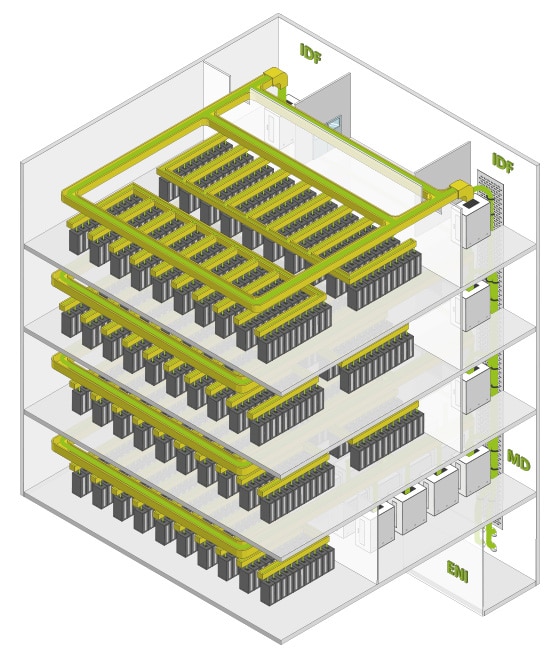 Today’s business requirements are changing daily, and the infrastructure that supports those businesses needs to be equally dynamic. That means providing highly scalable connectivity infrastructure to enable the rapid integration and migration to next generation, higher speed, active equipment in your IT deployment.
Today’s business requirements are changing daily, and the infrastructure that supports those businesses needs to be equally dynamic. That means providing highly scalable connectivity infrastructure to enable the rapid integration and migration to next generation, higher speed, active equipment in your IT deployment.
In today’s data centers, network equipment running at 10Gb/s is becoming obsolete with network speeds rapidly moving to 40Gb/s and 100Gb/s. At the higher end of the data center Hyperscale cloud operators, 400Gb/s speeds will be the standard by the end of 2019. Data center cabling infrastructure installed today needs to accommodate all of these future speeds.
In order to future proof your data center infrastructure, considerations such as maximum reach, complexity of network design, bandwidth requirements for now and the future and total network link cost all play a role. For the majority of Enterprise data centers, where maximum link distances are below 200m, a multimode solution will always come through as the most cost effective solution when cabling and active devices are considered. Above 200m, singlemode infrastructure and active devices are normally required and more cost effective.
Once the fiber type has been decided on, the next important infrastructure decision is the connector interface. For multimode optics, for both 40Gb/s and 100Gb/s the most common and cost effective solution is a 40GBASE-SR4 or a 100GBASE-SR4. Both of these solutions utilize 4 lanes of transmit and receive (8 fibers) in order to achieve the higher data rate – 40Gb/s running 4 lanes of 10G and 100Gb/s running 4 lanes of 25G. Both of these solutions utilize a Base-8 MPO/MTP cabling infrastructure. These Base-8 MPO infrastructure systems can also run a simple 10Gb/s system by utilizing an MPO to LC breakout module, allowing a 10G system be installed on day one with a clear upgrade path to 40 and 100Gb/s.
Once the reach requirement grows to 200m and a single-mode solution is deployed, the optics choices in the active equipment are a little more complex! The choices vary greatly according to reach and speeds required from the network links, however the connector interface of the transceivers remains either LC Duplex or a Base-8 MPO/MTP. A device with an LC Duplex interface will generally deploy multiple lanes based on different wavelengths down a single fiber pair and a device with an MPO interface will deploy multiple lanes down four pairs of parallel fibers. This means that the connector choices for single-mode are the same as for the multimode solution – choosing a Base-8 MPO based system allows you to deploy 8-fiber parallel MPO systems and also an LC Duplex based system using an MPO to LC breakout module.
Summary
With the continued requirement for expansion and scalability within business IT infrastructure, cabling architectures must provide reliability, manageability and flexibility. Deployment of an optical connectivity solution that allows for an infrastructure that meets these requirements for current and future data rates is a key factor when choosing the optical connectivity that has this scalability and future proofing.




